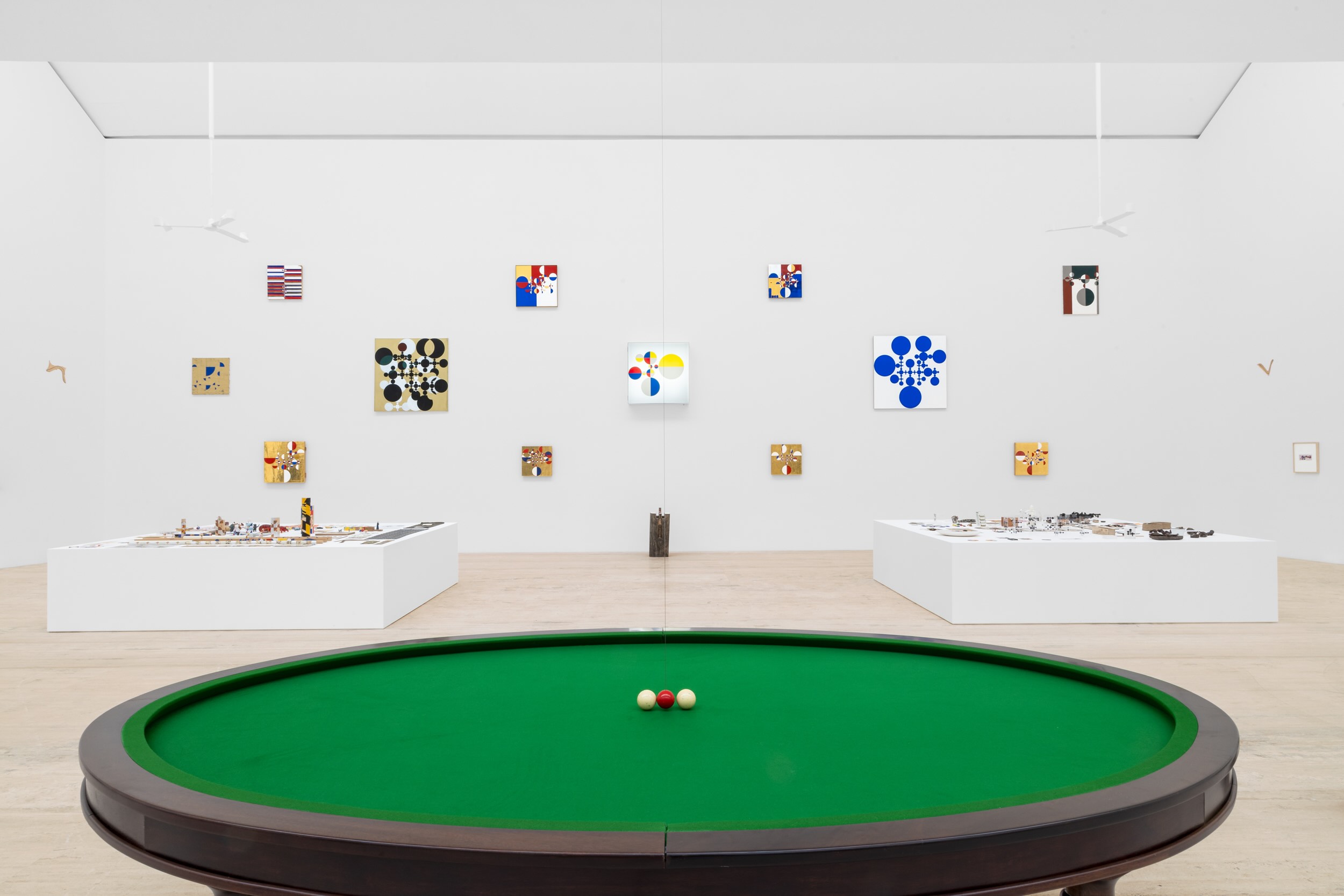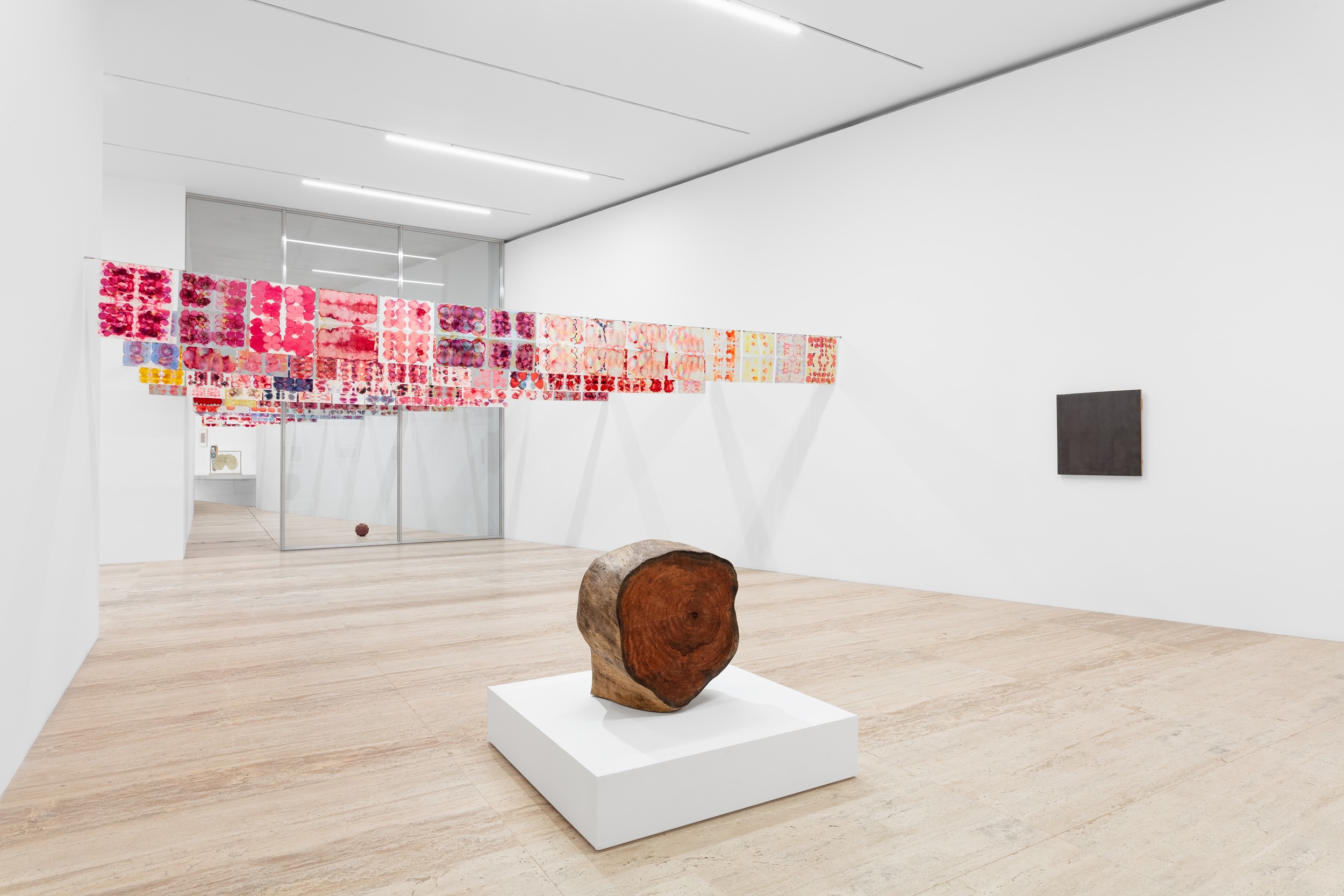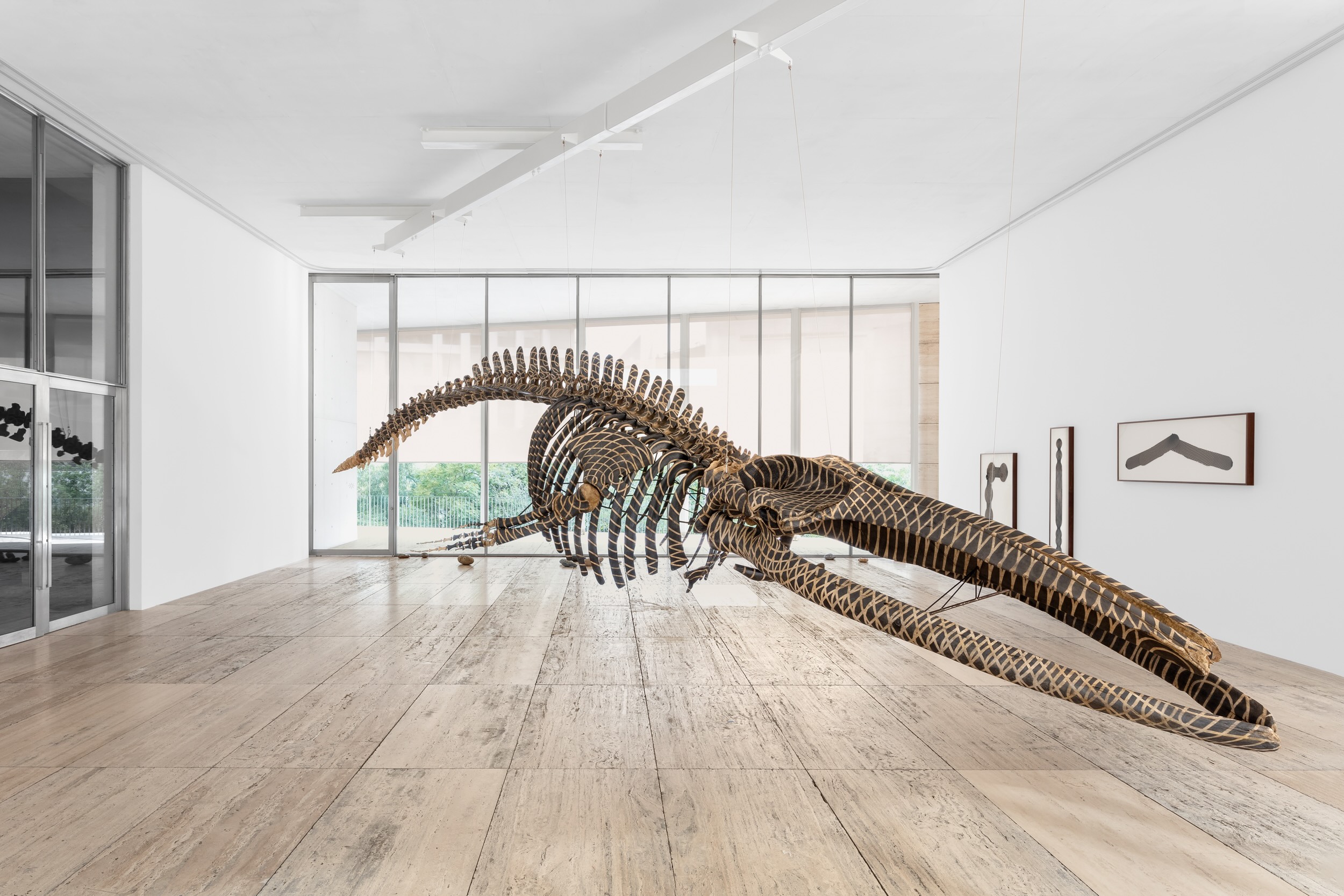
Article
Correspondence on Gabriel Orozco's 'Politecnico Nacional' at the Museo Jumex
by El Cuarto de los Ojos Sucios
Reading time
8 min
Hi, Eric.
I hope your evening is flowing gently, that the kitties are calmer, that you’re feeling cheerful.
I'm writing to open another public correspondence. Although our exchanges usually revolve around painting, the truth is that painting always seems to brush against other themes, like the production of subjectivity through the gaze or the social performativity tied to the artist’s body. Anyway. This time I'm writing to talk about Gabriel Orozco; I went to his show at Museo Jumex and I liked it. I was a bit hesitant because so much has been said about the artist that it's difficult to clear away all the discourse in order to simply place one’s body and mind before the work—but my first impression was that I had a good time.
I remember when I studied art history they used to say Gabriel was the most important artist in the country. He was in a sort of competition with Francisco Toledo, who was still alive at the time. According to some of my professors, Orozco’s major feat was having managed to shed the burden of national identity to succeed in the global circuit by grounding himself in the local. Ten years later I ask myself: what does “the local” mean amid a classist and racist free market that continues to take lives? After graduation, I worked writing contemporary art notes for an outlet that also branded itself as local. The editor asked me to write less about the discourse surrounding the work and more about the artists’ personal tastes—favorite restaurants and clothing shops. I refused. I stopped working there. The local—for whom? For the aspirational middle class? For people from the Global North who drift through as digital nomads, tagging, inflating, and gentrifying our cities? Last Sunday I woke up to a video from my friend Cas showing the eviction of an entire block of his neighbors in downtown Mexico City. I felt powerless, sadness, and fierceness.
Is this “local” that sells cities the same local Orozco refers to? At the end of the day, one of my positions as a writer on contemporary art is to reflect on the gaze—and therefore the subjectivation—that an artwork constructs and/or reproduces. I’m interested in exploring what collective agencies move through it and what ghosts it tries to awaken in the viewer (even if the viewer brings their own).

I went to the show with a friend. We loved the prints of leaves on different types of paper, his work tables, photographs, and watercolors. In an interview—I think for Art21—Orozco says he doesn’t like oil painting, that he prefers water, even tempera. We saw water and its displacements across matter. We contemplated it, and it felt good. Another friend who went before me told me she liked the surface saturated with graphite located near the exit of one of the rooms. I looked for it, and saw my reflection. Material enchantments.
I think I enjoyed the exhibition because it lingers on everyday life.
After the serotonin rush his aesthetic gave me—paper scraps, photographs, tables, and details, a mix of stationery shop and La Lagunilla street market—I came to the conclusion that what attracts me to his work is the way it frames materials within a dangerous harmony that makes one believe the world is like that. But in reality, that beautification—though real—isn’t exactly the everyday, because the everyday also includes dispossession, forced disappearances, phallocentric cults, hatred toward women, drug trafficking enslaving the poorest classes, classism, racism, and gentrification that invents the local only to devour it. That beauty is a fantasy—not a universal: there is no universal—a declension that ends up essentializing an idea which corresponds to a form, a form that only has place (and meaning) within the subjectivation and valuation of an art production that circulates through galleries, museums, and other spaces where whiteness is content with it; a logic that is unsustainable for the majority.

I won’t deny that Orozco fascinates me, but my intention is to question the way we receive his works as actions, arrangements, or beautiful—even clever and surprising—images.
In his early work, there’s not really an update to the flânerie (the flâneur walks without destination and without wanting to buy anything¹) because the contemplative, almost demiurgic, attention does in fact have a goal: the exhibition and circulation of the artwork. Specifically, I think his operation consists in focusing the gaze on momentary assemblage, forgetting the territory it’s situated in. On the other hand, in his return to national themes there’s also no critique or clear stance on what’s happening in Mexico, just a rather dull circulation of icons that operate as fetishistic phantasmagorias presenting the local as ornament and nonfunctional space: a politicization of aesthetics. And yes, at first I enjoyed the exhibition—lingering in the details and the temporality of beauty he invents with small gestures—but I now declare myself in detox from that way of looking. After talking with you, that pleasure took a stance and turned into self-critique. Thank you for agreeing, through that conversation, to open this correspondence (of only one public delivery :( due to the character count).
Hugs, S.
Hi, Sandra.
Thank you so much for the invitation to take part in this conversation. I have to confess it was very exciting to visit the exhibition and see in person, for example, the shoe box [Caja vacía de zapatos, 1993]. As an art student in the early 2000s, my aesthetic education (and I dare say that of my entire generation) was heavily influenced both by his work and by his figure as a global artist.
%2C_1993.jpg?alt=media&token=61eca0ea-4383-48c2-9a2d-ba9ec8c78224)
I agree with you that this image of the everyday Orozco constructs in his work is as fascinating as it is problematic, and I share the constant feeling (what to call it? suspicion? mistrust?) that accompanied each serotonin rush many of the works gave me.
I’d like to sketch out some ideas in hopes of giving shape to that suspicion and sharing them with you.
We might begin by asking: How do we view a museum show by an artist who has taken part in highly controversial public cultural projects like the Chapultepec Forest Cultural Complex²? Or who makes paintings like those included in his recent solo show at kurimanzutto titled gabriel orozco, where, in the words of Irmgard Emmelhainz, “he reaffirms the shape of official discourse and the collective values it embodies”³? Are his activities as cultural agent and as artist separate domains—or, on the contrary, do they share a connection beyond mere authorship? Can we look at one and ignore the other?
From his earliest photographs, I get the sense that Orozco is in search of small sculptural phenomena that take place in the most ordinary situations, like a dog’s wagging tail or the mark breath leaves on a polished surface. From these observations, he derives a set of minimal qualities we could group as:
*Minimal forms (the circle, the grid).
*Minimal forces (bodily pressure, erosion, cutting).
*Minimal rules (repetition, reflection, the knight’s movement in chess).
It’s like a kind of material atomism (one of his emblematic series is even titled Los atomistas): each variation of these elements produces a different form, a different artwork. And up to that point, I feel no shame in being swept away by the beauty of much of his work.

What I find extremely problematic is that when this atomism “leaves” the gallery—its poetic or abstract domain—and lands in a contested territory (as in the examples mentioned above), the result is an erasure of socio-political, ecological, and economic dimensions that inevitably traverse it.
My great suspicion is that these decisions retroactively affect all his work. How? One idea we might test out within the limited scope of this epistolary exchange is that Orozco’s atomism is the formal and conceptual strategy that allows him to be “a Mexican artist, but also a global artist⁴” at the same time. That is, it’s the means by which he achieves the goal of universality: treating the local as form or poetics, not as ethics or politics. As if anything could be anywhere.
I wonder if the premise behind the myth of cosmopolitanism is the local treating the local like a tourist. And looking at Orozco’s iconic photographs from the ’90s through that lens is deeply saddening.
I hope you’re well and having a peaceful night.
Hugs, E.
1: Anna Mª Iglesia. La revolución de las flâneuses. WunderKammer, 2019.
2: https://cultura.nexos.com.mx/chapultepec-o-el-precio-de-la-desolacion-carta-a-gabriel-orozco/
3: https://artishockrevista.com/2024/03/14/humanismo-mexicano-gabriel-orozco-en-kurimanzutto/#_ftnref11
4: https://www.art-it.asia/en/u/admin_ed_itv_e/6pt3srdjvidyoy7okb5x/
Published on July 27 2025